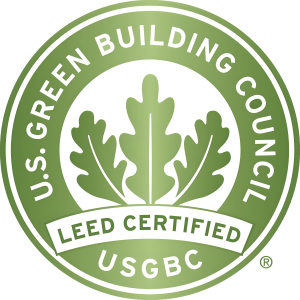LEED and SITES: Restorative outdoor spaces
Feature image: Green roof at the The Center for Sustainable Landscapes at the Phipps Conservatory and Botanical Gardens in Pittsburgh, Pennsylvania. Photo credit: Paul G. Wiegman.
The green building industry’s emphasis on human health and well-being has gained traction during the COVID-19 pandemic. Increased attention is being paid to indoor air quality, access to natural light and the importance of outdoor green space. Prior to the pandemic, the following projects turned to LEED and SITES certification guidelines to restore natural habitats and optimize the human experience—and it is proving to be an especially valuable approach during these trying times.
Restored creek creates healthy urban corridor
The Dell Medical School and its teaching hospital, Dell Seton Medical Center, are part of a large medical district located in central Austin on the University of Texas campus. All Dell Medical School buildings are LEED Gold, and the 16.2-acre landscape also achieved SITES Gold certification.
The development project—encompassing 4.4 million square feet—included the construction of multiple facilities in a dense urban environment bisected by Waller Creek, a neglected stream that had been by battered by previous development. From the project’s start, the mile of creek that runs through campus was regarded as a benefit to be optimized.
“With this project, the university saw the value of the creek to the landscape,” says Heather Venhaus, principal of Regenerative Environmental Design and the lead SITES consultant. Instead of backing the new buildings up to the creek and turning them away from it, as had been the traditional approach with previous buildings, they set the new medical district buildings back from the creek to give it breathing room and directed the view toward the natural ecosystem. The idea was to call attention to the restorative value of nature. “You can’t go to these facilities and not experience nature,” says Venhaus.
“The creek was something that was either going to embraced into the health mission or something we just bridged and then ignored,” says University of Texas director of sustainability Jim Walker. “We embraced it…There were many conversations around how the creek could contribute to health outcomes.”
https://www.usgbc.org/articles/leed-and-sites-restorative-outdoor-spaces



